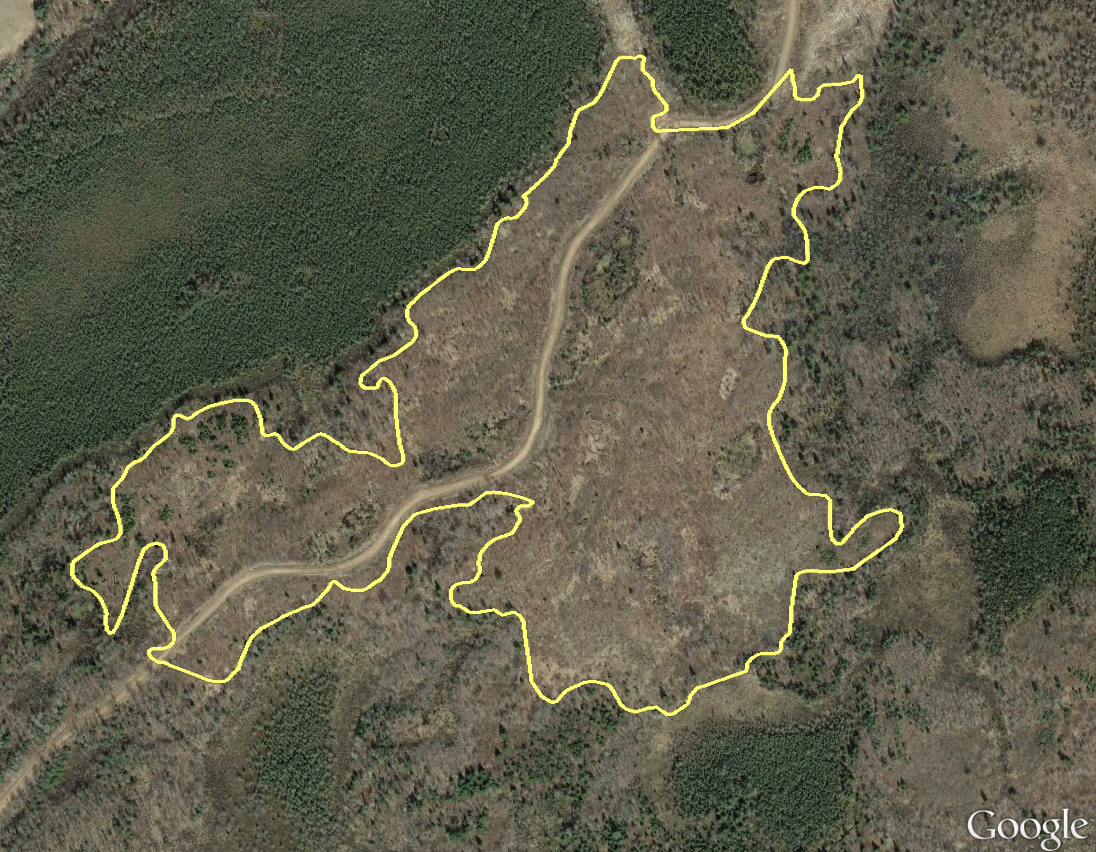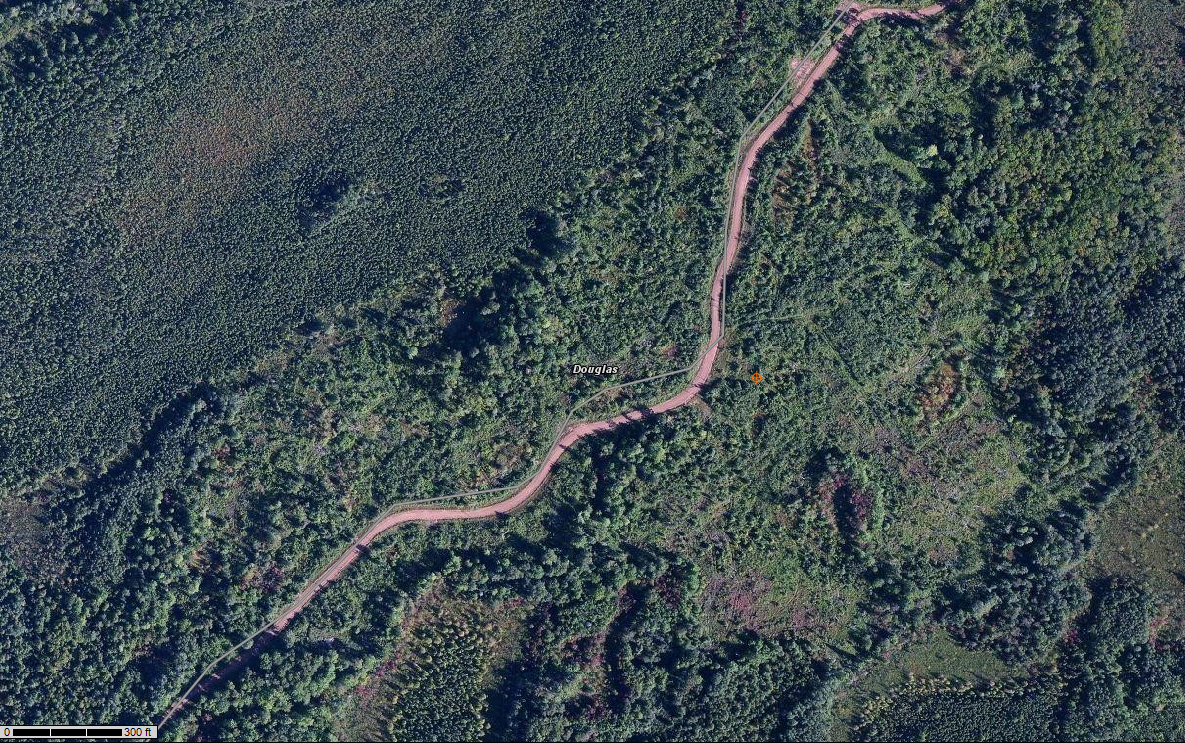Overview
Shelterwood system applied to regenerate an even-aged stand of paper birch. The objective of this sale was to harvest a mature white birch dominated stand totaling 49 acres. This harvest will fit the standards of an even aged shelterwood harvest to yield a new age class.
Silviculture Objective(s)
To conduct an experimental shelterwood harvest designed to regenerate paper birch.
Pre-treatment stand description and condition
Stand establishment and management history:
Little is known about the past management practices applied to this site, but it can be assumed to be similar to prevalent harvesting methods of the early-to-mid 1900s. Mostly consisting of high-grading the white pine early on and later the aspen from these mixed stands.

Figure 1. Sale outline on Google Earth.
Pre-treatment forest health issues:
No specific evidence of diseases or insect problems were detected within the sale.
Landowner objectives/situation:
A check of the Natural Heritage Inventory revealed no known occurrences of rare species or communities and the Land Type Association of the area is Patison Moraines.
Silviculture Prescription
This stand was leave-tree marked with an overall goal of leaving 35% crown closure in the residual stand. The silvicultural prescription for this treatment utilized site preparation in the form of soil scarification (pole-length skidding during a summer harvest) to stimulate natural white birch regeneration through seed. Those trees exhibiting the best figure, form, and crowns were marked and should be retained as seed trees. This unit will require harvesting equipment and site preparation to improve the seedbed by scarification in order to promote natural birch regeneration via seed germination. The prescription called for leaving the stand for four years after the shelterwood prep cut allowing the seed bank to germinate and establish seedlings, followed by a complete overstory removal through a winter harvest to protect the seedlings, promoting vigor.
The sale boundary was designed to ensure the best possible opportunity for harvesting during non-frozen, summer conditions.
What actually happened during the treatment
The quadratic mean stand diameter of 10.17 inches was calculated for the residual (marked) trees with 31 ft.² of residual basal area. This equates to 35% crown closure at 55 trees per acre, which exactly match the original goal of 35%.

Figure 2. Summer 2011 airphoto from Web Soil Survey.
Post-treatment assessment
The site has exhibited great regeneration success. An August 2009 regeneration check involving measurement of 68 plots across the 49-acre harvest area showed very good stocking of paper birch, with 54% of new seedlings of paper birch indicated as free to grow. Other species regenerated within the treatment area include red oak, aspen, red maple, and other northern hardwoods. 41% of birch regeneration was in the form of seedlings, with 28% seedling sprouts and 31% stump sprouts. See table below for regeneration detail.

Figure 3. Regeneration data from a 2009 plot survey.
Summary / lessons learned / additional thoughts
This experimental treatment seems to have been a success. A similar treatment was implemented just north of this one (Boone & Crockett birch sale) a year later and has also led to successful paper birch regeneration.
